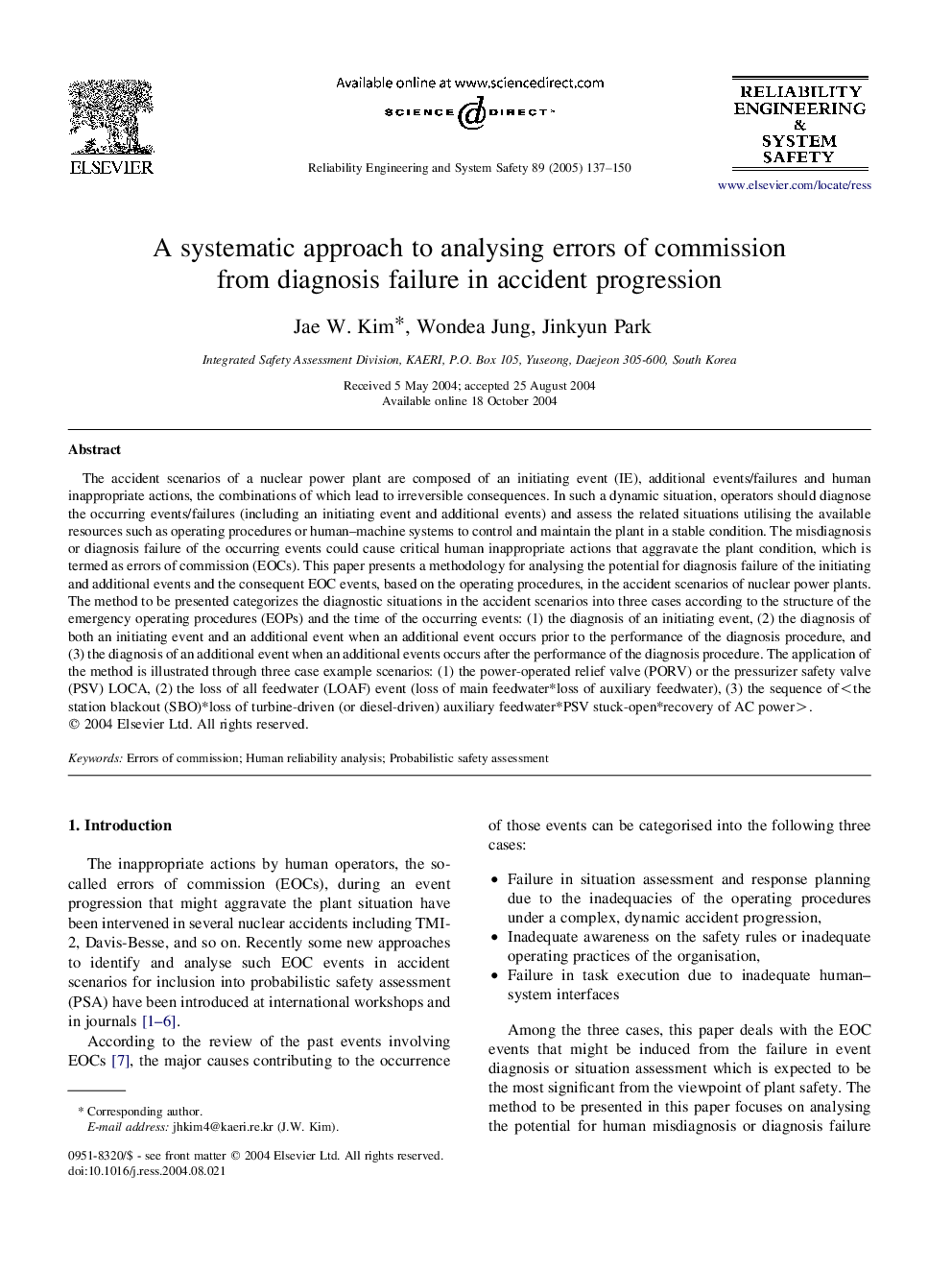| Article ID | Journal | Published Year | Pages | File Type |
|---|---|---|---|---|
| 10420012 | Reliability Engineering & System Safety | 2005 | 14 Pages |
Abstract
The accident scenarios of a nuclear power plant are composed of an initiating event (IE), additional events/failures and human inappropriate actions, the combinations of which lead to irreversible consequences. In such a dynamic situation, operators should diagnose the occurring events/failures (including an initiating event and additional events) and assess the related situations utilising the available resources such as operating procedures or human-machine systems to control and maintain the plant in a stable condition. The misdiagnosis or diagnosis failure of the occurring events could cause critical human inappropriate actions that aggravate the plant condition, which is termed as errors of commission (EOCs). This paper presents a methodology for analysing the potential for diagnosis failure of the initiating and additional events and the consequent EOC events, based on the operating procedures, in the accident scenarios of nuclear power plants. The method to be presented categorizes the diagnostic situations in the accident scenarios into three cases according to the structure of the emergency operating procedures (EOPs) and the time of the occurring events: (1) the diagnosis of an initiating event, (2) the diagnosis of both an initiating event and an additional event when an additional event occurs prior to the performance of the diagnosis procedure, and (3) the diagnosis of an additional event when an additional events occurs after the performance of the diagnosis procedure. The application of the method is illustrated through three case example scenarios: (1) the power-operated relief valve (PORV) or the pressurizer safety valve (PSV) LOCA, (2) the loss of all feedwater (LOAF) event (loss of main feedwater*loss of auxiliary feedwater), (3) the sequence of.
Related Topics
Physical Sciences and Engineering
Engineering
Mechanical Engineering
Authors
Jae W. Kim, Wondea Jung, Jinkyun Park,
